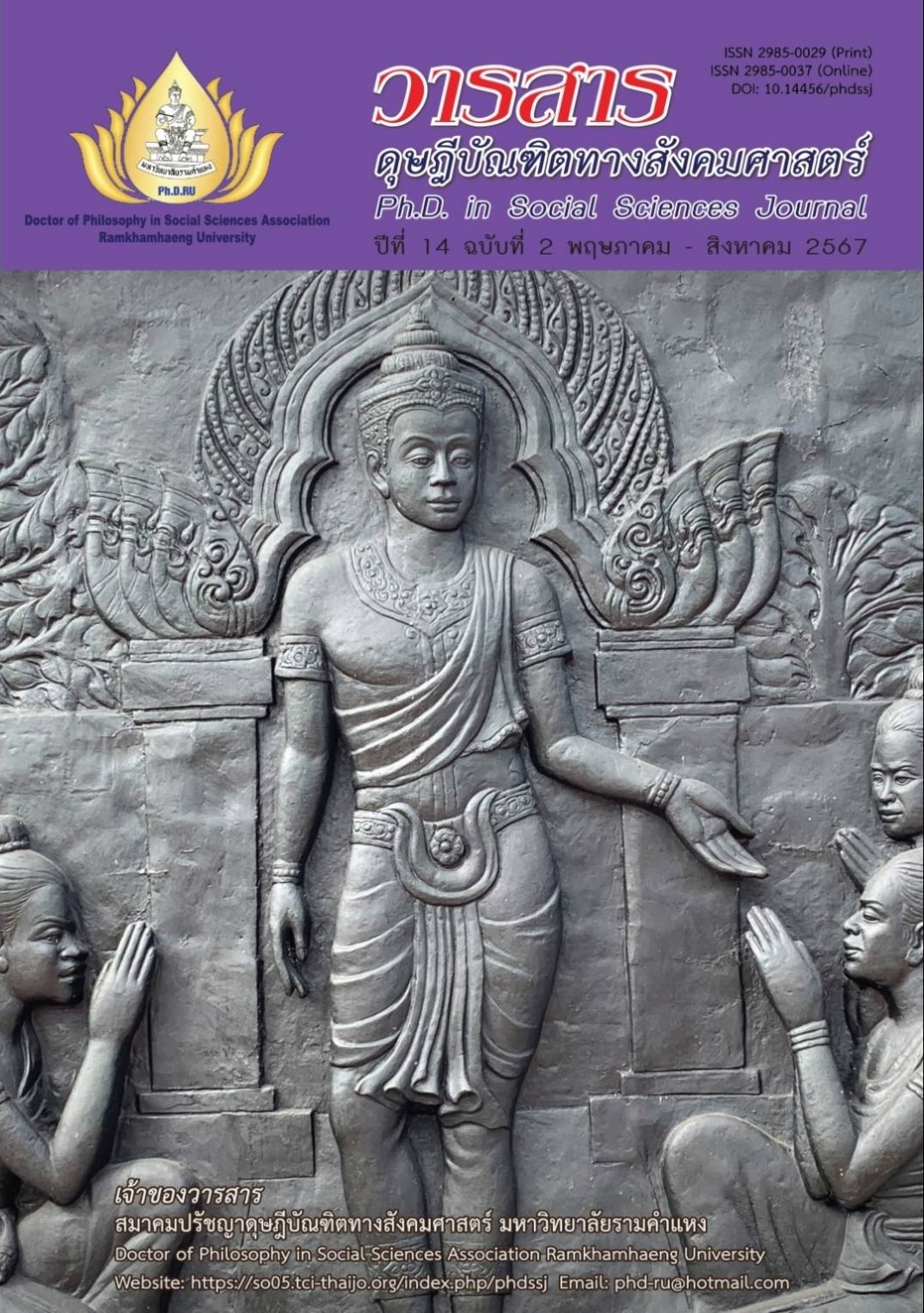ปัจจัยที่ส่งผลต่อความพึงพอใจและความตั้งใจเชิงพฤติกรรมของนักท่องเที่ยวในการท่องเที่ยวโดยชุมชนของประเทศไทย
Main Article Content
บทคัดย่อ
บทความวิจัยนี้มีวัตถุประสงค์เพื่อ (1) ศึกษาปัจจัยที่ส่งผลต่อการพัฒนาชุมชนด้านการท่องเที่ยวอย่างยั่งยืนของชุมชนบ้านน้ำเชี่ยว ชุมชนแม่กำปอง และชุมชนกกสะทอน (2) ศึกษาปัจจัยที่ส่งผลต่อความพึงพอใจของนักท่องเที่ยวที่เดินทางมาท่องเที่ยวในชุมชนบ้านน้ำเชี่ยว จังหวัดตราด ชุมชนแม่กำปอง จังหวัดเชียงใหม่ และชุมชนกกสะทอน จังหวัดเลย และ (3) นำเสนอข้อมูลที่ส่งผลต่อการพัฒนาชุมชนด้านการท่องเที่ยวอย่างยั่งยืนของชุมชนบ้านน้ำเชี่ยว ชุมชนแม่กำปอง และชุมชนกกสะทอน ผู้วิจัยใช้การวิจัยผสมวิธีโดยการศึกษาจากเอกสารที่เกี่ยวข้องกับการท่องเที่ยวและการสัมภาษณ์เชิงลึกจากผู้นำชุมชน จำนวน 3 แห่ง และแบบสอบถามความคิดเห็นจากนักท่องเที่ยวจำนวน 340 คน ใช้การวิเคราะห์สมการโครงสร้าง (SEM) ด้วยโปรแกรม AMOS
ผลการวิจัย พบว่า ปัจจัยที่ส่งผลต่อการพัฒนาชุมชนด้านการท่องเที่ยวอย่างยั่งยืนของทั้งสามชุมชน คือ การคงไว้ซึ่งเอกลักษณ์ของแต่ละชุมชน อาทิ คุณค่าทางภูมิศาสตร์ คุณค่าทางอารมณ์ คุณค่าทางสังคม คุณค่าทางเศรษฐกิจ และคุณค่าของการมีส่วนร่วม และจากผลการศึกษานี้สามารถนำผลการวิจัยไปใช้ประโยชน์ต่อการพัฒนาการท่องเที่ยวเชิงชุมชนในอนาคต รวมถึงความสำคัญของการมีส่วนร่วมของชุมชนท้องถิ่นในกระบวนการวางแผนละการตัดสินใจ และค้นหาวิธีลดผลกระทบเชิงลบ
Article Details

อนุญาตภายใต้เงื่อนไข Creative Commons Attribution-NonCommercial-NoDerivatives 4.0 International License.
บทความวิชาการ บทความวิจัย และบทวิจารณ์หนังสือในวารสารดุษฎีบัณฑิตทางสังคมศาสตร์ เป็นความคิดเห็นของผู้เขียน มิใช่ของคณะผู้จัดทำ และมิใช่ความรับผิดชอบของสมาคมปรัชญาดุษฎีบัณฑิตทางสังคมศาสตร์ มหาวิทยาลัยรามคำแหง (กรณีการทำวิจัยในมนุษย์ ผู้วิจัยต้องผ่านการอบรมจริยธรรมการวิจัยในมนุษย์ และนำหลักฐานมาแสดง)
เอกสารอ้างอิง
Ajzen, I. (1985). From intentions to actions: A theory of planned behavior. In J. Kuhl & J. Beckmann, (Eds), Action control: From cognition to behavior (pp. 11-39). Springer.
Ajzen, I. (1991). The theory of planned behavior. Organizational Behavior and Human Decision Processes, 50(2), 179-211.
Alegre, J., & Juaneda, C. (2006). Destination loyalty: Consumers’ economic behavior. Annals of Tourism Research, 33(3), 684-706.
Bagozzi, R. P., Gopinath, M., & Nyer, P. U. (1999). The role of emotions in marketing. Journal of the Academy of Marketing Science, 27(2), 184-206.
Batra, R., & Holbrook, M. B. (1990). Developing a typology of affective responses to advertising. Psychology and Marketing, 7(1), 11-25.
Bitner, M. J. (1992). Servicescapes: The impact of physical surroundings on customers and employees. Journal of Marketing, 56(2), 57-71.
Boonratana, R. (2010). Community-based tourism in Thailand: The need and justification for an operational definition. Kasetsart Journal of Social Sciences, 31(2), 280-289.
Chen, C. F., & Chen, F. S. (2010). Experience quality, perceived value, satisfaction and behavioral intentions for heritage tourists. Tourism Management, 31(1), 29-35.
Duarte Alonso, A., Sakellarios, N., & Pritchard, M. (2015). The theory of planned behaviour in the context of cultural heritage tourism. Journal of Heritage Tourism, 10(4), 399-416.
Edvardsson, B., Enquist, B., & Johnston, R. (2005). Co-creating customer value through hyperreality in the prepurchase service experience. Journal of Service Research, 8(2), 149-161.
Gstaettner, A. M., Rodger, K., & Lee, D. (2017). Visitor perspectives of risk management in a natural tourism setting: An application of the Theory of Planned Behaviour. Journal of Outdoor Recreation and Tourism, 19, 1-10.
Han, H., & Kim, W. (2009). Outcomes of relational benefits: Restaurant customer’ perspective. Journal of Travel & Tourism Marketing, 26(8), 820-835.
Han, H., & Hyun, S. S. (2015). Customer retention in the medical tourism industry: Impact of quality, satisfaction, trust, and price reasonableness. Tourism Management, 46, 20-29.
Heydari Fard, M., Sanayei, A., & Ansari, A. (2021). Determinants of medical tourists’ revisit and recommend intention. International Journal of Hospitality & Tourism Administration, 22(4), 429-454.
Holbrook, M. (1999). Introduction to consumer value. In M. Holbrook (Ed.), Consumer value: A framework for analysis and research (pp. 1–28). Routledge.
Holbrook, M. B., & Hirschman, E. C. (1982). The experiential aspects of consumption: Consumer fantasies, feelings, and fun. Journal of Consumer Research, 9(2), 132-140.
Pine, B. J., Pine, J., & Gilmore, J. H. (1999). The experience economy: Work is theatre and every business a stage. Harvard Business School Press.
Plutchik, R. (1980). Emotion: A psycho-evolutionary synthesis. Harper & Row.
Puczkó, L., & Rátz, T. (2000). Tourist and resident perceptions of the physical impacts of tourism at lake balaton, Hungary: Issues for sustainable tourism management. Journal of Sustainable Tourism, 8(6), 458-478.
Rather, R. A., & Hollebeek, L. D. (2020). Experiential marketing for tourism destinations. In S. K. Dixit (Eds.), The Routledge handbook of tourism experience management and marketing (pp. 271-282). Routledge.
Saisamute, S., Pleerux, N., Karnchanasutham, S., & Nualchawee, K. (2016). Geoinformation technology for managing Community Based Tourism (CBT) In Chanthaburi and Trat provinces. Journal of Science and Technology Mahasarakham University, 35(1), 39-47. [In Thai]
Sanchez, J., Callarisa, L., Rodriguez, R., & Moliner, M. (2006). Perceived value of the purchase of a tourism product. Tourism Management, 27(3), 394-409.
Seow, A. N., Choong, Y. O., Moorthy, K., & Chan, L. M. (2017). Intention to visit Malaysia for medical tourism using the antecedents of Theory of Planned Behaviour: A predictive model. International Journal of Tourism Research, 19(3), 383-393.
Sheth, J. N., Newman, B. I., & Gross, B. L. (1991). Why we buy what we buy: A theory of consumption values. Journal of Business Research, 22(2), 159-170.
Sorakunnas, E. (2022). “It’s more than just status!” An extended view of social value in tourism. Tourism Recreation Research, 49(4), 699-713.
Um, K. H., & Kim, S. M. (2018). Application of fairness theory to medical tourists’ dissatisfaction and complaint behaviors: The moderating role of patient participation in medical tourism. Journal of Social Service Research, 44(2), 191-208.
Wakefield, K. L., & Blodgett, J. G. (1996). The effect of the servicescape on customers’ behavioral intentions in leisure service settings. Journal of Services Marketing, 10(6), 45-61.
Wang, C. R., Sirakaya-Turk, E., & Aydin, S. (2019). The impact of millennium floods on vacation decisions in a coastal tourism destination: The case of South Carolina, USA. Tourism Analysis, 24(2), 193-211.
Woodruff, R. B., Cadotte, E. R., & Jenkins, R. L. (1983). Modeling consumer satisfaction processes using experience-based norms. Journal of Marketing Research, 20(3), 296-304.
Zhou, M., & Yu, H. (2022). Exploring How tourist engagement affects destination loyalty: The intermediary role of value and satisfaction. Sustainability, 14(3), 1-17.


